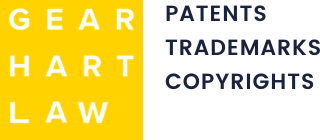Getting a warning letter accusing you of patent infringement is never a welcome surprise. Whether it arrives by email or certified mail, the message usually comes with legal jargon and urgent demands. It’s easy to feel overwhelmed, but you’re not out of options. This post will walk you through the first steps to take, what the letter actually means, and how we help clients respond with a clear legal and business strategy in mind.
Don’t Ignore It—But Don’t Panic Either
The worst thing you can do with a patent warning letter is ignore it. That doesn’t mean you should rush to respond, either.
These letters are typically written by the patent holder’s attorney. They’re intended to get your attention, trigger fear, and push you into an unfavorable settlement. That’s why it’s important to stay calm and reach out to a patent attorney before doing anything else.
We help clients evaluate the real risk, assess next steps, and respond in a way that avoids making things worse. A well-informed early response can keep things from escalating.
What the Letter Is Really Saying: Reading Between the Lines
A typical patent warning letter includes several key parts:
- A description of the product or service that’s allegedly infringing
- One or more patent numbers and their claims
- Demands, which may include halting sales, entering a license agreement, or providing a written response by a certain date
It may sound aggressive, but that doesn’t mean it’s valid. Some letters come from companies known for sending mass warnings. Others are sent by legitimate businesses trying to protect what they believe are enforceable rights. The difference isn’t always obvious at first glance.
That’s where we come in. We’ll review the letter and the patent claims to figure out whether they actually apply to your product. Sometimes the claims are too broad, too vague, or simply not a match.
Your Options: Strategic Responses You Can Consider
Once we’ve reviewed the letter, we’ll walk you through your options. These might include:
- Non-infringement analysis – We compare your product to the patent claims to determine whether there’s a match. If there’s not, we help you respond accordingly.
- Invalidity arguments – Sometimes, a patent shouldn’t have been granted in the first place. We search for prior art—older inventions or publications—that can be used to challenge the patent.
- Design modifications – If the product comes close to infringing, we may recommend changes that reduce your exposure without affecting performance.
- License discussions or settlement – In some cases, paying a reasonable fee to use the patent may make the most business sense. We help you negotiate from a position of strength.
The right approach depends on your goals, your tolerance for risk, and how likely the other side is to sue. We’ll help you make those calls with clarity.
If It Escalates: Preparing for Potential Litigation
Most patent disputes don’t end up in court—but some do. If it looks like litigation is on the table, we help you get ready.
That means:
- Preserving documents that relate to product development
- Reviewing past communications with suppliers or contractors
- Assessing the potential damages you could face
- Looking at insurance policies that might cover legal defense
Even if you hope to settle, preparing for court makes your position stronger. It shows the other side that you’re taking the matter seriously—and that you’re not afraid to defend your rights.
Talk to a Patent Attorney Before You Respond
Responding too soon—or saying the wrong thing—can backfire. You don’t want to admit to anything or agree to terms that box you in later. That’s why your first move should be to talk with a patent attorney who can help you assess the situation clearly.
At Gearhart Law, we guide businesses through these situations every day. We’ll help you figure out whether the claim has merit, what your options are, and how to respond in a way that protects your business.
Let’s Work on a Smarter Way Forward
Getting accused of patent infringement doesn’t mean you’ve done anything wrong. But how you respond can affect your business long after the letter is sent. We’re here to help you take the next step. Whether that means pushing back, negotiating terms, or preparing for court, you’ll have a team behind you that knows how to handle it. Contact Gearhart Law today to schedule a consultation. Let’s protect what you’ve built together.

